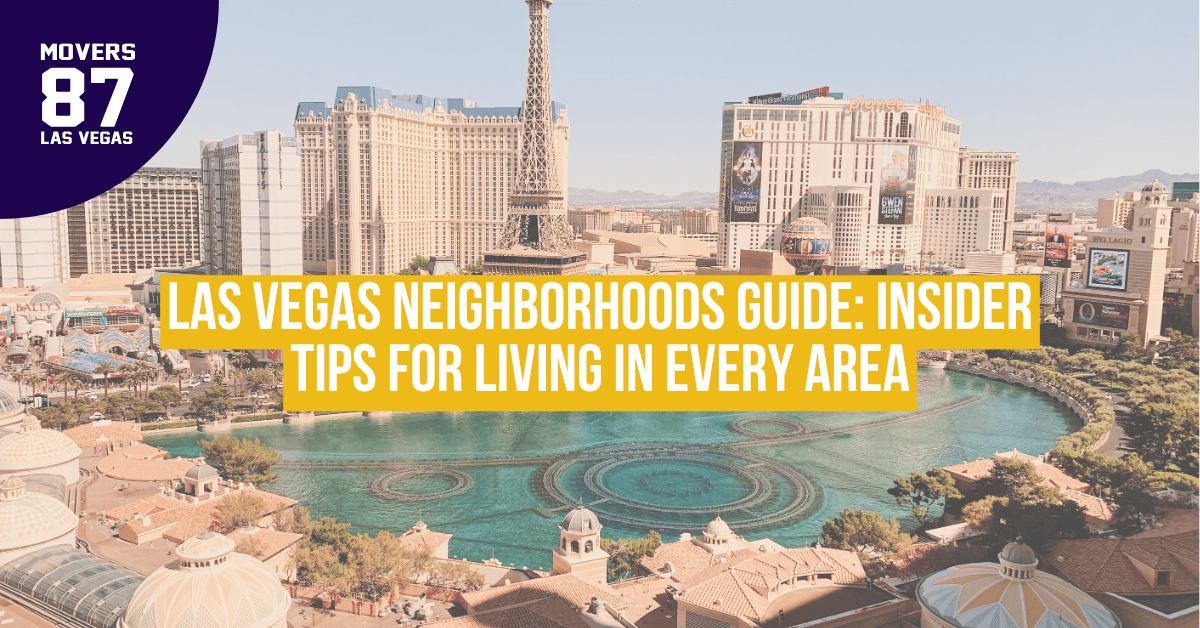Las Vegas Neighborhoods Guide: Insider Tips for Living in Every Area

Las Vegas, considered one of the most vibrant cities in the U.S., where people never sleep, also offers a suburban feeling among its communities and nearby neighborhoods. From luxury communities in Summerlin and Anthem to budget-friendly areas in Centennial Hills, each community has its own unique qualities. Whether you’re a first-time home buyer or moving to Las Vegas, there’s a neighborhood for everyone. In this Las Vegas neighborhoods guide, you’ll find local insights on housing, schools, local businesses, and lifestyle tips, making it easier to decide where to move.
Key Takeaways
- Las Vegas neighborhoods offer diverse lifestyles, from quiet family-friendly suburbs to vibrant urban hubs.
- Understanding housing types, pricing trends, and neighborhood features helps people make informed decisions based on both budget and lifestyle preferences.
- Housing costs vary; neighborhoods like Marble Manor and Huntridge provide more affordable living options.
- Local businesses, parks, and hidden gems make each neighborhood unique and enhance daily life.
- Understanding amenities, safety, and lifestyle helps you choose the best neighborhood for your needs.
Lifestyle and Entertainment in Las Vegas
Las Vegas neighborhoods cater to a wide range of lifestyles. Choosing the right area isn’t just about housing — it’s about the community, amenities, and day-to-day experiences. Here’s how you can experience each lifestyle across the Downtown-adjacent neighborhoods:
Entertainment & Nightlife
Downtown neighborhoods like Fremont East District and the Arts District (18b) are at the heart of Las Vegas nightlife. Fremont East is known for its rooftop bars, live music venues, and the Neon Museum, while the Arts District blends nightlife with culture through local breweries, lounges, and monthly events like First Friday. Living here means nightlife is within walking distance, offering energy and convenience.
Outdoor & Active Living
While suburban areas like Summerlin boast larger outdoor spaces, Downtown-adjacent neighborhoods still offer parks and
recreational spots. Lorenzi Park near Rancho Manor, Anthem Hills Park in Henderson (for those just outside city limits), and trails along Charleston Boulevard provide opportunities for walking, cycling, and family outings. Smaller community parks in Huntridge and John S. Park Historic District add to the charm of active city living.
Arts & Culture
The cultural heartbeat of Las Vegas is centered in the Arts District (18b) and Downtown Las Vegas. Murals, galleries, and performance spaces define the Arts District, while historic neighborhoods like Huntridge and John S. Park connect residents to the city’s mid-century architecture and historic theaters. Local cultural hubs like The Smith Center for the Performing Arts and Container Park bring additional layers of arts and community together.
Food & Dining
Las Vegas is a food lover’s city, and Downtown neighborhoods deliver plenty of local flavor. Spring Valley and Chinatown, while a short drive west, are known for authentic Asian cuisine and trendy cafes. Closer in, Fremont East and the Arts District feature local staples like Carson Kitchen and Makers & Finders Coffee, drawing both locals and visitors. Smaller neighborhood gems — from diners in Bonanza Village to cafes in Huntridge — add a community feel to dining.
Community & Family Life
Many Downtown neighborhoods balance convenience with a strong sense of community. West Las Vegas is rich in cultural heritage and community pride, with local churches and cultural centers anchoring the neighborhood. John S. Park Historic District offers tree-lined streets and family-oriented gatherings, while Southridge and Orleans Square provide affordable housing close to schools, libraries, and shopping. Local farmers’ markets, community centers, and libraries across the area help foster neighborhood connections.
Pro Tip: Living in Las Vegas neighborhoods isn’t just about choosing a house—it’s about embracing the lifestyle. Walkable parks, access to cultural events, and local businesses like coffee shops, gyms, and artisan markets can significantly improve your day-to-day experience.
10 Neighborhoods Near Las Vegas: Know Where You’ll Fit Bes
Downtown Las Vegas is more than just Fremont Street’s neon glow — it’s home to some of the city’s oldest and most historic neighborhoods. Each area around Downtown carries its own identity, shaped by local landmarks, community spaces, and a strong sense of history. From restored mid-century homes to artsy warehouse districts and long-standing cultural hubs, these neighborhoods give residents easy access to the city. Below, we’ll explore the communities surrounding Downtown, highlighting what makes each one distinct.
Fremont East District
Fremont East sits just beyond the Fremont Street Experience, where classic neon blends with modern redevelopment. The area has become a cultural and entertainment hub while still holding onto its historic Vegas charm. Walkable streets, bars, and art installations make it one of Downtown’s most recognizable neighborhoods. You’ll find it along East Fremont Street between Las Vegas Boulevard and 8th Street.
Housing & Opportunities:
- Home Types: Historic single-family homes, loft-style condos, and newer apartment developments
- Investment Potential: Opportunities for restored mid-century homes and lofts in converted commercial buildings, appealing to those who want a unique property near Downtown.
- Local Favorites:
- Atomic Liquors is one of the oldest freestanding bars in Las Vegas.
- Container Park offers open-air shopping, live music, and family-friendly events.
- Public bus routes and rideshare hubs along Fremont Street.
- Nearby access to the Las Vegas City Hall and the main transit center.
The Arts District (18b)
The Arts District, often called “18b,” is the creative core of Las Vegas. Originally spanning 18 blocks, it has grown into a hotspot for galleries, coffee shops, and performance venues. It’s a mix of industrial spaces, new lofts, and colorful murals that highlight the city’s artistic side. The district sits mainly between Charleston Boulevard, Hoover Avenue, Main Street, and Las Vegas Boulevard.
Housing & Opportunities:
- Home Types: Converted lofts, modern condos, and historic buildings
- Investment Potential: The area's ongoing revitalization offers opportunities to anyone interested in properties with artistic and cultural value
- Local Favorites:
- The Arts Factory is a central hub for local artists and studios.
- First Friday festival, drawing thousands each month with food, music, and art.
- Charleston Boulevard transit line connecting to Downtown and UNLV.
- Small markets and eateries are scattered along Main Street.
John S. Park Historic District
South of Charleston Boulevard, John S. Park is a residential neighborhood recognized for its mid-century homes and historic designation. It’s quieter than the nightlife zones but only minutes from Downtown, making it appealing for those who value both charm and convenience. The neighborhood is bordered by Las Vegas Boulevard to the west and Maryland Parkway to the east.
Housing & Opportunities:
- Home Types: Mid-century single-family homes
- Investment Potential: The historic designation can provide stability, and the area's proximity to Downtown makes it attractive for long-term investments
- Local Favorites:
- Tree-lined streets showcase 1940s–1950s architecture.
- Community pride is reflected in regular neighborhood events.
- Walking distance to cultural sites in the Arts District.
- John S. Park Elementary School is at the heart of the community.
Huntridge Neighborhood
The Huntridge area is one of Las Vegas’s oldest neighborhoods, anchored by the historic Huntridge Theater. Its homes reflect mid-20th-century design, and the neighborhood has seen ongoing revitalization efforts. Residents value its central location, near both Downtown and cultural attractions. Huntridge sits around Maryland Parkway and Charleston Boulevard.
Housing & Opportunities:
- Home Types: Mid-century single-family homes
- Investment Potential: The area's historic significance and ongoing revitalization efforts make it an attractive option for people seeking character-rich properties
- Local Favorites:
- Huntridge Circle Park is a popular spot for outdoor relaxation.
- The iconic Huntridge Theater is currently under restoration.
- Classic diners and small businesses along Maryland Parkway.
- Several local schools and daycare centers are nearby.
- RTC bus lines offer direct routes to Fremont and the Strip.
Rancho Manor
Rancho Manor lies northwest of Downtown and is known for its larger residential lots. Its proximity to Lorenzi Park and community amenities makes it a long-standing residential area with steady roots. The neighborhood stretches around Rancho Drive and Washington Avenue.
Housing & Opportunities:
- Home Types: Single-family homes on larger lots
- Investment Potential: The larger lot sizes and established community make it appealing for everyone, and even long-term investors
- Local Favorites:
- Lorenzi Park has two lakes, sports fields, and shaded picnic areas.
- Proximity to Springs Preserve, a cultural and environmental attraction.
- Medical services are available within the nearby Las Vegas Medical District.
- Schools such as J.T. McWilliams Elementary are close by.
- Retail and shopping corridors along Rancho Drive.
Orleans Square
A compact neighborhood west of Downtown, Orleans Square features a mix of older homes and apartment complexes. Its location along Charleston Boulevard makes it convenient for shopping, dining, and commuting while still feeling residential. Orleans Square is centered near Charleston Boulevard and Arville Street.
Housing & Opportunities:
- Home Types: Older single-family homes and apartment complexes
- Investment Potential: The area's central location offers opportunities for people looking for rental properties and homes
- Local Favorites:
- Local restaurants and diners are tucked into shopping plazas.
- Nearby access to small parks and recreation areas.
- Shopping centers along Charleston Boulevard.
- Local schools and health services are within a short drive.
Marble Manor
Marble Manor is one of Las Vegas’s historic public housing neighborhoods, developed in the early 1950s. It has a unique place in the city’s history, with strong community roots and a location close to Downtown. The area is located near Martin Luther King Jr. Boulevard and Washington Avenue.
Housing & Opportunities:
- Home Types: Public housing units and rental properties
- Investment Potential: While primarily a rental community, the area's proximity to Downtown offers potential for future development and revitalization
- Local Favorites:
- Walking distance to small neighborhood parks.
- Local schools and daycare options are nearby.
- Grocery and retail options along Washington Avenue.
- Quick drive into Fremont Street and central Downtown.
Bonanza Village
Located just northwest of Fremont Street, Bonanza Village is a residential neighborhood with modest homes and a close-knit character. Its location makes it convenient for residents who work in or near Downtown. The neighborhood sits along Bonanza Road and Martin Luther King Jr. Boulevard.
Housing & Opportunities:
- Home Types: Single-family homes
- Investment Potential: The neighborhood's affordability and proximity to Downtown make it attractive for people considering moving.
- Local Favorites:
- Nearby access to Lorenzi Park and recreational facilities.
- Quiet residential streets with vintage-style homes.
- Close to community schools and childcare centers.
- Fast access to U.S. 95 and I-15 freeways.
Palomino Area
The Palomino Area sits near Bonanza Road and offers a blend of residential homes and small commercial hubs. Its convenience to major streets makes commuting around the city easier. The neighborhood is found around Palomino Lane and Washington Avenue.
Housing & Opportunities:
- Home Types: Single-family homes and small commercial properties
Investment Potential: The area's mixed-use zoning offers opportunities for both residential and commercial investments - Local Favorites:
- Family-owned Mexican restaurants and specialty markets.
- Community churches and local gathering spaces.
- Bonanza Road connections leading to Downtown.
- Local schools are within walking distance.
West Las Vegas
West Las Vegas is a historically significant area, recognized for its role in the city’s cultural and social history. It remains one of the most important neighborhoods in the Downtown area, with a strong community identity and cultural landmarks. The neighborhood spans west of Las Vegas Boulevard, stretching to Martin Luther King Jr. Boulevard.
Housing & Opportunities:
- Home Types: Single-family homes, some duplexes, and historic properties
- Investment Potential: Longstanding community roots and historic significance make it appealing for people interested in character-rich homes and potential renovation projects
- Local Favorites:
- West Las Vegas Arts Center, offering live music, theater, and art classes.
- Historic Westside School is a key educational and cultural landmark.
- Annual cultural festivals and neighborhood events celebrate the area’s heritage.
- Convenient access to Fremont Street, Downtown offices, and public transit lines.
Southridge
Southridge lies south of Fremont Street and is one of the smaller neighborhoods within the Downtown area. It combines residential housing with quick access to major city streets, making it convenient for commuting. The area is roughly centered around Maryland Parkway and Charleston Boulevard.
Housing & Opportunities:
- Home Types: Single-family homes and townhouses
- Investment Potential: Close proximity to Downtown and major thoroughfares makes it attractive for anyone seeking convenient city access and for investors looking at rental opportunities
- Local Favorites:
- Small local diners and family-owned cafes.
- Shopping along Maryland Parkway and Charleston Boulevard.
- Nearby libraries, schools, and community centers.
- Easy access to bus lines, rideshare pickup zones, and the I-15 for commuting.
Housing Costs & Affordability: Finding the Right Neighborhood for Your Budget
Downtown Las Vegas offers a wide range of housing options, from historic lofts and single-family homes to modest apartments. While it doesn’t feature the ultra-luxury estates found in Summerlin or Henderson, Downtown-adjacent neighborhoods provide opportunities for people with different budgets. Understanding the housing costs and types in each neighborhood can help you choose a location that fits both your lifestyle and finances.
Luxury & Premium Neighborhoods in Las Vegas
While Downtown Las Vegas is predominantly mid-range and affordable, several nearby neighborhoods cater to anyone seeking high-end living. Areas like Summerlin West, MacDonald Highlands, and The Ridges feature gated communities, hilltop estates, and panoramic views of the Las Vegas Valley.
These neighborhoods offer spacious luxury homes, private amenities such as country clubs and golf courses, and a level of privacy and exclusivity not found within the Downtown core. Homes in these areas typically range from $850,000 to over $2 million, appealing to people looking for upscale design, modern conveniences, and long-term investment potential.
Mid-Range Neighborhoods in Las Vegas
Comfortable communities with modern amenities and good schools:
Rancho Manor
- Median Listing Price: ~$475,000
- Housing Market Trends: Prices have steadily appreciated due to the neighborhood’s large lots and central location. A mix of long-term rentals and buying homes creates a stable market.
Orleans Square
- Median Listing Price: ~$384,500
- Housing Market Trends: Affordable pricing attracts everyone; some homes may need updates, offering opportunities for value-add investments.
Palomino Area
- Median Listing Price: ~$384,500
- Housing Market Trends: Modest appreciation in recent years; mixed-use zoning offers flexibility for locals and newcomers.
Southridge
- Median Listing Price: ~$410,000
- Housing Market Trends: Demand remains steady due to proximity to Downtown; townhouses appeal to anyone seeking lower-maintenance properties.
Affordable Neighborhoods in Las Vegas
Budget-friendly options without sacrificing convenience:
Fremont East District
- Median Listing Price: ~$415,000
- Housing Market Trends: Strong demand from professionals and investors looking for short-term rental opportunities. Lofts and condos are limited in supply, maintaining competitive pricing.
The Arts District (18b)
- Median Listing Price: ~$580,000
- Housing Market Trends: Slightly higher prices reflect limited availability and cultural value. Popular among creative professionals and people seeking urban loft-style living.
John S. Park Historic District
- Median Listing Price: ~$405,000
- Housing Market Trends: Historic homes maintain steady value; modest appreciation in recent years due to Downtown interest.
Huntridge Neighborhood
- Median Listing Price: ~$417,000
- Housing Market Trends: Increasing interest from people seeking a central location and cultural heritage; renovation projects are common.
Marble Manor
- Median Listing Price: ~$350,000
- Housing Market Trends: Stable demand from renters; limited resale activity but offers potential for redevelopment in the long term.
Bonanza Village
- Median Listing Price: ~$463,000
- Housing Market Trends: Prices reflect affordability with steady demand for long-term residents.
West Las Vegas
- Median Listing Price: ~$395,000
- Housing Market Trends: Prices are moderate, with opportunities for renovations and upgrades.
Sources from Government of City of Las Vegas, and Zillow
Essential Tips for Choosing the Right Neighborhood
Picking the right Las Vegas neighborhood isn’t just about finding a house — it’s about discovering a community that fits your lifestyle, routines, and long-term goals. Each area has its own personality, from quiet family-friendly streets to bustling urban hubs filled with dining, nightlife, and culture.
Understanding your priorities — whether it’s safety, school quality, commute time, affordability, or access to parks and entertainment — is essential. Spending time in neighborhoods, talking to locals, and exploring amenities can prevent surprises and help you find a place where you’ll feel at home.
These tips reflect insights from a local resident who has navigated the city, offering guidance based on real experiences rather than just online research.
Consider Your Lifestyle Needs
Understanding your personal lifestyle needs is crucial. Are you seeking a family-friendly environment with excellent schools and parks? Or perhaps a vibrant urban setting with nightlife and cultural attractions? Identifying your priorities will help narrow down suitable neighborhoods.
- People should prioritize schools, parks, and safety. Neighborhoods like Bonanza Village and John S. Park provide excellent schools and community spaces.
- Many often seek nightlife, dining, and social hubs. Downtown Las Vegas and West Las Vegas offer bars, restaurants, and cultural spots.
- Many prefer peaceful areas, scenic views, and healthcare access. Huntridge or Rancho Manor offer tranquility and hospitals like Valley Hospital.
- Consider hobbies and routines: walking trails, gyms, coffee shops, and local events shape your daily life.
Evaluate Safety and Crime Rate
Safety is a top priority for anybody. Research crime statistics and speak with local residents to get a sense of the area's safety. Neighborhoods with active community watch programs and low crime rates often provide a more secure living environment.
- Check Local Crime Statistics: Review crime maps for neighborhoods like John S. Park, West Las Vegas, Southridge, and Downtown to compare violent and property crime rates.
- Speak with Residents: Local insight is invaluable. Ask neighbors about safety, community watch programs, and general neighborhood activity.
- Community Watch Programs: Look for active neighborhood watch initiatives, which often indicate engaged, safety-conscious communities.
- Proximity to Police Stations: Neighborhoods near LVMPD precincts or local security patrols often benefit from faster response times.
Factor in Commute and Accessibility
Consider the distance and time it takes to commute to your workplace, school, or other daily destinations. Traffic patterns, public transportation options, and road connectivity can significantly impact your daily routine.
- Examine proximity to main roads: I-215, I-515, and the Strip. Commutes vary depending on neighborhood location.
- Walkability and bike paths improve daily convenience. Downtown Las Vegas and the Fremont East District provide accessible streets with shops and eateries nearby.
- Consider public transit options for shorter travel times or easy access to work, schools, and entertainment.
Evaluate Amenities and Community Features
Access to amenities such as grocery stores, healthcare facilities, recreational centers, and entertainment options can enhance your quality of life. Evaluate the availability and proximity of these services in the neighborhoods you're considering.
- Parks, gyms, libraries, and recreation centers improve the quality of life. Palomino’s community pools and Art District (18b) are prime examples.
- Local events, farmers’ markets, and art walks foster community engagement and help residents connect.
- Access to grocery stores, coffee shops, and shopping centers reduces travel time and enhances convenience.
Understand Affordability and Long-Term Costs
Research the local housing market to understand property values, rental rates, and market trends. This information can help you assess the affordability and investment potential of a neighborhood.
- Compare home prices, property taxes, utility rates, and HOA fees across neighborhoods. Bonanza Village and Marble Manor are more budget-friendly.
- Consider potential resale value. Mid-range neighborhoods like Rancho Manor and Orleans Square often appreciate faster over time.
- Factor lifestyle expenses, including dining, gyms, and childcare, to ensure your budget aligns with your neighborhood choice.
Spend Time Visiting Neighborhoods
Getting involved in the community can provide insights into the neighborhood's culture and dynamics. Attend local events, join community groups, and interact with residents to gauge the area's social environment.
- Walk streets, visit parks, and observe traffic and noise at different times of day.
- Explore local shops, restaurants, coffee houses, and community spaces to assess convenience and vibe.
- Attend neighborhood events or markets to experience safety, friendliness, and social activity firsthand.
Leverage Local Knowledge
- Talk to current residents for honest insights about community, safety, and hidden gems..
- Use online forums, Facebook groups, and other mediums to stay updated on trends, events, and local developments.
Living in Las Vegas Neighborhoods: Final Thoughts
Las Vegas neighborhoods offer something for everyone, whether you’re searching for family-friendly streets, vibrant nightlife, or luxurious hillside homes. Each area has its own personality, amenities, and lifestyle, making it important to explore neighborhoods firsthand, consider your priorities, and weigh factors like safety, schools, commute, and affordability.
If you’re planning a move, working with local experts can simplify the process. 87 Movers Las Vegas provides valuable guidance on neighborhood logistics, packing, and relocation, helping you settle smoothly into your new community. Request a moving quote today and get personalized advice to make your relocation stress-free!


